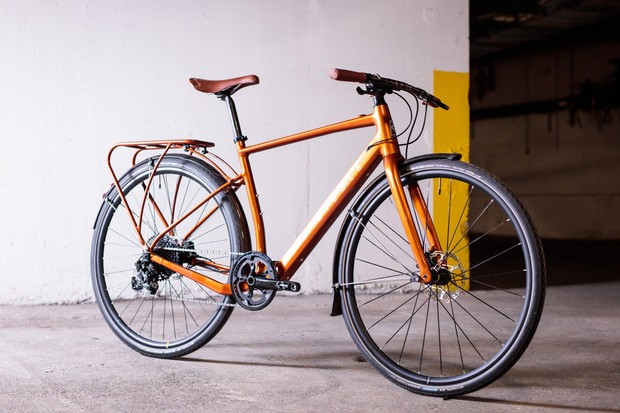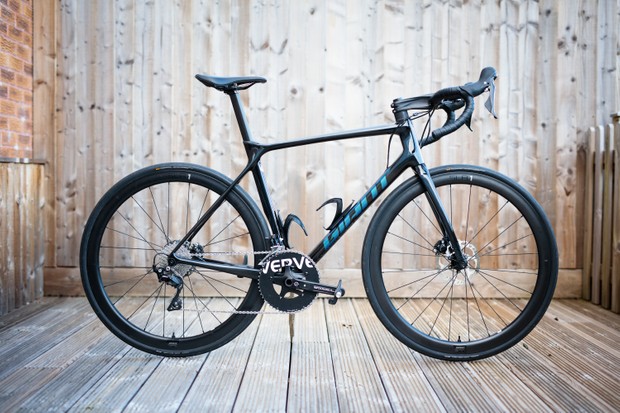The very first practical bicycle is believed to have been invented in 1817 by a German man called Baron Karl von Drais. Every year about 50 million bicycles are produced. Today there are almost 400 million bicycles in China and about a billion bicycles in the world. Over the last few hundred years, inventors from all around the world strived to create perfect bicycle types for all kinds of uses. As a beginner rider there is always a question which bicycles to buy. Here you can get informed about all the most popular bicycle types. We at FunCleRiders mostly use the below types of bicycles depending upon the Trails we ride.
A mountain bike is a bicycle designed for Off-Road riding. Mountain bikes share some similarities with other bicycles, but incorporate features designed to enhance durability and performance in rough terrain, which makes them heavier, more complex and less efficient on roads. Mountain bikes also known as MTB, typically include a suspension fork, rear suspension, large knobby tires, more durable wheels, more powerful brakes, straight, extra wide handlebars. Dropper posts can be installed to allow the rider to quickly adjust the seat height.
Mountain bikes are generally specialized for use on mountain trails, single track, fire roads, and other unpaved surfaces. Mountain biking terrain commonly has rocks, roots, loose dirt, and steep grades. Many trails have additional technical trail features (TTF) such as log piles, log rides, rock gardens, skinnies, gap jumps, and wall-rides. Mountain bikes are built to handle these types of terrain and features. The heavy-duty construction combined with stronger rims and wider tires has also made this style of bicycle popular with urban riders and couriers who must navigate through potholes and over curbs.


A gravel bike is a drop-bar bike designed to let you ride over many different surfaces. The drop handlebar and road bike-like design mean that you can make good progress on the road, but with wider tyres, lower gearing and stable handling you can also head off the beaten track. Riding a bike designed for multi-terrain excursions means you can link together gravel routes in new ways, taking in sections of gravel roads, forest tracks, trails, byways and bridle paths. Or you can load up your gravel bike with a camping kit for multi-day bikepacking adventures. Like any bike category, a gravel bike from one manufacturer can look very different from another – and that’s even more the case here, with some gravel machines pitched more towards road speed and light off-road riding, and others bearing more resemblance to mountain bikes. Choosing the right gravel bike for you depends on the type of riding you have planned.
Like most other bikes, gravel bikes are made from a variety of frame materials. The most common options are aluminum and carbon. Aluminum is affordable, durable and relatively lightweight, making it a good material for a budget gravel bike. Carbon frames are typically lighter than aluminum ones. Carbon can also be engineered to fine-tune stiffness and comfort, and can offer more opportunities for aerodynamic tube shapes (yes, aero gravel bikes are a thing). Aluminum and carbon aside, you’ll also find options for steel and titanium gravel bikes.
Hybrid bicycles blend characteristics from more specialized road bikes, touring bikes and mountain bikes.The resulting “hybrid” is a general-purpose bike that can tolerate a wide range of riding conditions and applications. Their stability, comfort and ease of use make them popular with novice cyclists, casual riders, commuters, and children.
Hybrids typically borrow the flat, straight handlebars and upright seating posture of a mountain bike, which many bicyclists find comfortable and intuitive. Hybrids also employ the lighter weight, thinner wheels and smooth tires of road bikes, allowing for greater speed and less exertion when riding on the road. Hybrid bikes often have places to mount racks and bags for transporting belongings, much like a touring bike.
Hybrid bikes have spawned numerous sub-categories satisfying diverse ridership. They are classified by their design priorities, such as those optimized for comfort or fitness — and those offered as city, cross or commuter bikes.
Hybrids usually have a flat handlebar, as found on a mountain bike, rather than the drop bar you’d find on a road bike. This means shifting and braking components are often very similar to mountain biking units, instead of being STI-style integrated brake and shift levers as you’ll find on nearly all road bikes.
This allows for a more upright riding position – not as much outright speed but a position that many will find more comfortable, and potentially safer, in traffic. Hybrid bikes also tend to use larger volume tyres than road bikes, offering more comfort than narrower road rubber.




Bicycles are built and used for many different purposes, including road, mountain, cyclocross and
city riding. For each intended discipline, these bikes are optimized through design to offer different frame measurements, frame angles, types of parts and rider positioning.
Road bicycle is used to describe bicycles built for traveling at speed on paved roads. Mostly racing bicycles are Road bicycles. A bicycle built more for endurance and less the fast bursts of speed desired in a racing bicycle; as such, they usually have more gear combinations and fewer hi-tech racing features. Certain of these bicycles have been referred to as ‘sportive’ bicycles to distinguish them from racing bicycles. Using road bikes riders can do long miles rides without getting tired.
Road bike wheels don’t have to be as robust as those of mountain bikes, so they tend to have fewer spokes and lighter rims. Aerodynamics are important, so the rims are sometimes deeper.
Traditionally, road rims were very narrow, but in recent years they’ve been getting wider as research shows this is more aerodynamic, increases tyre volume for a smoother ride and potentially leads to fewer flat tyres. Road bike tyres are also skinny.
Touring bikes are designed to comfortably carry you and your luggage on bike trips. They are simple,
strong, stable, upright, and stiff enough to handle very heavy panniers. Touring bikes have adequate mounting points for racks, fenders, and water bottles, and are designed so that you can carry heavy loads
without the weight affecting the handling too much.
Touring bikes are optimized specifically around bike-travel carrying gear. Touring bikes can be categorized further into more specific uses.


Cruiser bikes are ideal for both city riding and some light trail excursions. It is recommended for low-speed, low-impact rides on both dirt paths and paved bike lanes. Since they have tough tires, they’re also good for riders who know there are a few potholes on their route.
Cruiser bikes are a great way to keep active while you’re on vacation in a very low-key way. Bicycles are naturally a low-impact workout. Not only can you get a full-body workout but you also strengthen your muscles, increase flexibility, fight fatigue, and reduce mental blocks. Most cruisers don’t have gears you can shift to help you up hills, so your best bet for blasting calories is to take a path with a little bit of incline, providing greater resistance.
A bicycle for usually two people sitting one behind the other.
Tandem bicycle or twin is a form of bicycle designed to be ridden by more than one person. The term tandem refers to the seating arrangement, not the number of riders. Patents related to tandem bicycles date from the mid 1880s. Tandems can reach higher speeds than the same riders on single bicycles, and tandem bicycle racing exists. As with bicycles for single riders, there are many variations that have been developed over the years.
